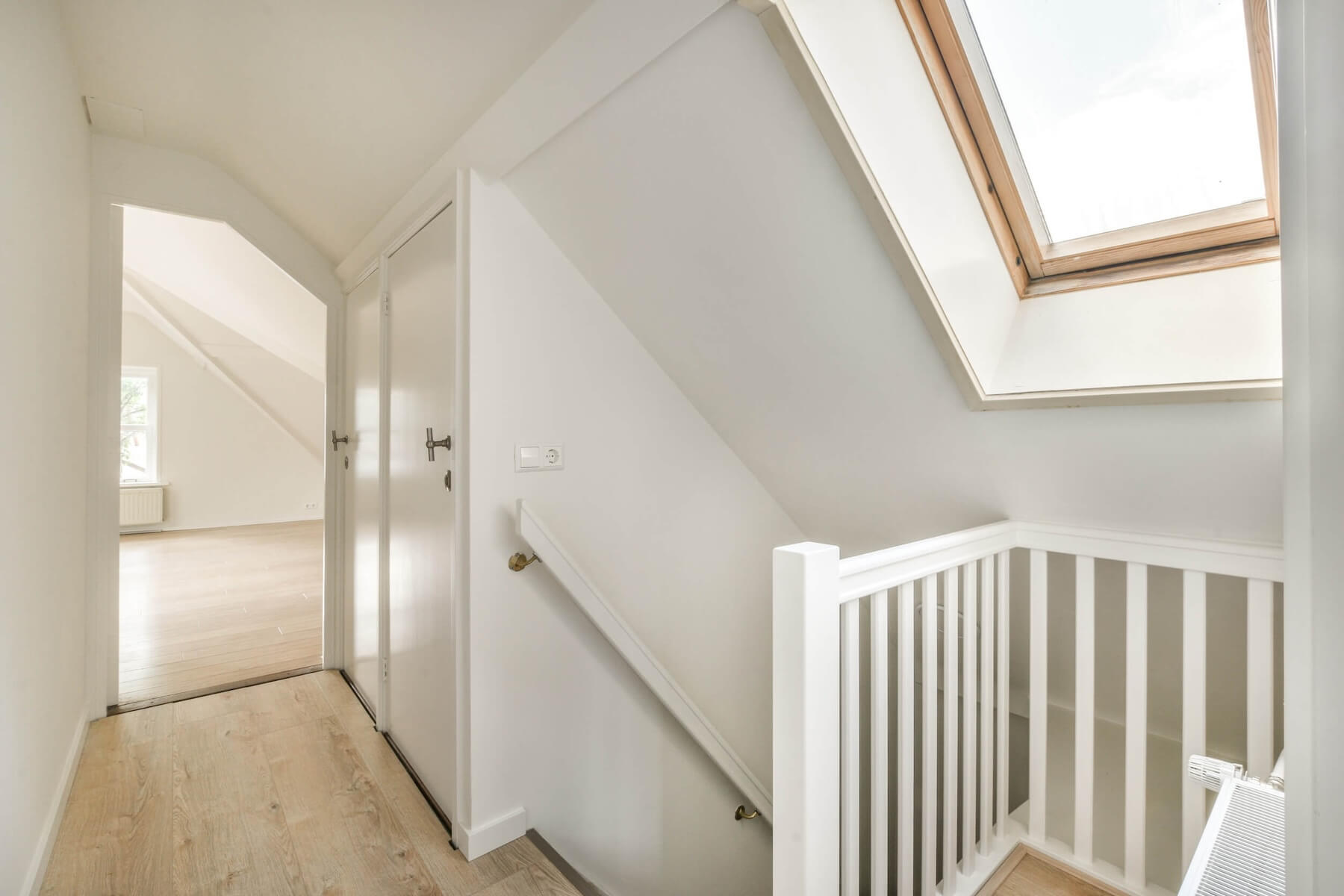Hip-To-Gable Loft Conversions
What is a gable loft conversion?
There are plenty of different loft conversion types available and include roof light or mansard. Another type you may not have heard of is the hip to gable loft conversion. So what is a hip to gable loft conversion? And why is it something anyone considering a loft conversion should entertain?
Hip to gable refers to two roof styles; hip and gable. A hip roof is slanted on each of its four sides, like a pyramid or a prism. This is the most structurally sound roof style because of the four supporting rafters (known as hips) angled at 45-degrees to stabilise the roof at the central ridge. While sturdy, these roofs are more complicated to design.
The second part of the hip to gable loft conversion is the gable roof. Gable roofs are slanted only on two sides compared to the four found on a hip roof.
Gable roofs are easier to construct, and the required design and materials are not as expensive compared to other roof types. They are a popular roof style, although they do not offer the robust durability of hip roofs. That said, you’ll also find better water drainage and an increased space in your loft, which could be beneficial for your property and add value to your home.
- Reliable and professional
- 20 + Years of experience
- From concept, design and completion
- Covering all areas in Essex
- Tailored Designs to Suit Your Needs
- High-Quality Workmanship & Materials
- Hassle-Free Project Management
- Increase Your Property Value

Do you need planning permission for a hip to gable loft conversion?
One of the most frustrating things about planning home renovations is when you have everything figured out, only to discover you can’t do anything without planning permission. But, if you’re considering a hip to gable loft conversion, you could be in luck. The majority of hip to gable loft conversions do not require planning permission as the work falls under permitted developments which homeowners are already entitled to.
However, there are a few exceptions. If your property is located in a conservation area or is a listed building, you may find it more complicated to convert your loft to a gable roof style. Certain buildings or sceneries across the country are protected, and you may not be aware of these protections before starting work.
This doesn’t mean you will miss out on potentially profitable renovations. Before you begin any work, it’s best to contact the local authority to find out what regulations – if any – you will need to follow to complete the loft conversion.
This could also be useful if you already have existing extensions on your property, whether these were added by yourself or the property’s previous owner. If you get the go-ahead, the conversion will still need building regulation approval to ensure everything is up to standard.
How much does a hip to gable loft conversion cost?
Before making the final decision regarding your renovation, you will need to think about what a hip to gable loft conversion cost might be. To put it simply, the average price of a hip to gable loft conversion can vary depending on several factors.
As all loft conversions are bespoke, the cost will vary between customers. Factors that can affect the overall price of the conversion can include the size of your attic, the state of your current roof, and the purpose of your ‘new’ loft.
For example, a loft conversion designed to create another bedroom may require more work than a loft conversion designed to clean up and improve the area. When deciding on your loft conversion, you must think about what you will use your loft for and whether it will stay like this permanently.
Some will use a loft conversion as a home office before repurposing it to a bedroom and vice versa. This is something you must think about before investing in a hip to gable loft conversion.

What property is a hip-to-gable loft conversion suitable for?
A loft conversion hip to gable is one of the most versatile home improvement projects you can carry out. Unlike other home renovations, hip to gable loft conversions are suitable for most properties (detached, semi-detached, end-of-terrace) as long as the current roof is hipped with three sloped sides.
This means that just about anyone can consider a hip to gable loft conversion, and there are many different things you can do with it.
As the hip to gable conversion will replace a sloped side with a flat side, you can increase the space inside your loft. This will make it more comfortable to spend time in and makes your loft more functional. If the loft is currently a place where boxes pile atop one another without any particular rhyme or reason, a hip to gable loft conversion gives you the chance to create a spare bedroom, home office, space for the kids, or even a work studio.
The potential is boundless, so get in touch today to learn more about how a hip to gable loft conversion could benefit you.
Contact us today for a FREE quote
We offer hip-to-gable loft conversion services in Essex and the surrounding areas, including – Basildon, Billericay, Maldon, Grays, Brentwood, Witham, Wickford, Clacton, Southend, Rayleigh, Rochford, South Ockendon, Benfleet, Chelmsford, Loughton, Epping, Harlow, Ingatestone, Braintree, Stanford-le-Hope, Saffron Walden, Chigwell and Colchester.
